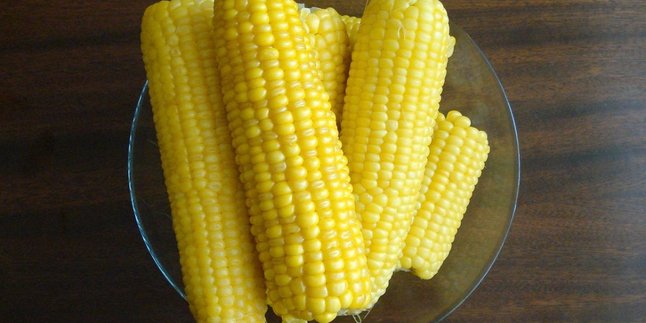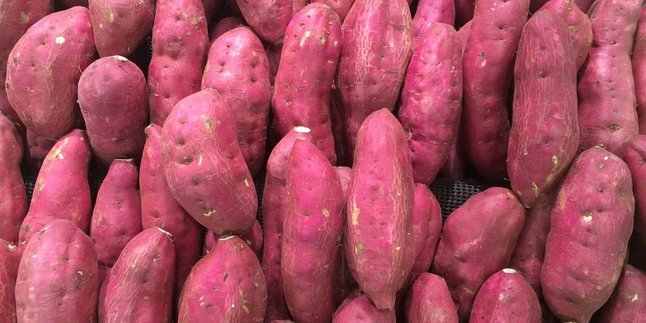Kapanlagi.com - High blood sugar levels often become a frightening specter, especially for those battling diabetes. This condition not only affects the quality of life but also increases the risk of serious complications if not handled properly. However, don’t worry! Managing blood sugar is not an impossible task.
To keep blood sugar levels stable, you need a combination of a healthy lifestyle and consistent monitoring. Regular blood sugar monitoring is crucial, especially for diabetics experiencing complications or those using insulin.
Here are various effective ways to lower blood sugar, from dietary choices to daily habits. Each step is designed to be easily implemented at home, so you can achieve optimal results in maintaining health.
1. Is Blood Sugar 300 Dangerous?
If your blood sugar level exceeds 240 mg/dl, it indicates that your blood sugar level is too high. If your blood sugar level at the time reaches more than 300 mg/dl and the results of two consecutive checks show the same number, consult a doctor immediately as this condition is life-threatening.
This condition should not be taken lightly, as high blood sugar is the main cause of diabetes.
"Many patients do not feel symptoms, so even though their blood sugar level has reached 300-400 mg/dl, they are unaware of the signs of diabetes," said Prof. Dr. dr. Dyah Purnamasari, Specialist in Internal Medicine at Cipto Mangunkusumo Hospital (RSCM) Jakarta in January 2024 as quoted by ANTARA.
What is Hyperglycemia?
Hyperglycemia is a condition where the blood sugar level exceeds the normal limit. Based on data, fasting blood sugar above 125 mg/dL or more than 200 mg/dL when checked at the time is a sign of high blood sugar.
Symptoms to Watch Out For
High blood sugar is often marked by fatigue, frequent thirst, and hunger. Some people also experience tingling or wounds that are difficult to heal. However, in some cases, this condition can occur without any symptoms at all.
Risks If Left Untreated
If not addressed, high blood sugar can lead to serious complications, such as nerve damage, diabetes, heart disease, and kidney disorders. Therefore, management steps must be taken immediately.
2. The Importance of Diet to Lower Blood Sugar
Choose Foods with Low Glycemic Index
Foods such as green vegetables, oats, and red beans have a low glycemic index, helping to maintain stable blood sugar levels. Avoid fatty and sweet foods that can trigger spikes in sugar.
Increase Fiber Intake
Fiber helps slow down the absorption of sugar in the blood. Consume fruits, vegetables, or legumes to meet your daily fiber needs.
Control Portions and Avoid Skipping Meals
Eating in small portions regularly helps prevent sudden spikes in blood sugar. Don't forget, skipping meals can actually worsen your blood sugar condition.
3. Physical Activity and Its Influence on Blood Sugar
Regular Exercise for Optimal Results
Regular physical activities such as brisk walking or aerobic exercise can improve insulin sensitivity, making blood sugar easier to control.
Recommended Duration and Frequency
Experts recommend exercising at least 150 minutes per week. You can divide it into 30 minutes each day for 5 days a week.
Benefits of Physical Activity for Health
In addition to helping lower blood sugar, exercise is also beneficial for maintaining an ideal weight and improving heart health.
4. The Role of a Healthy Lifestyle in Controlling Blood Sugar
Enough Sleep
Lack of sleep can affect insulin function and increase blood sugar levels. Make sure you sleep 7–9 hours every night to maintain your body’s health.
Manage Stress Well
Stress can trigger hormone spikes that raise blood sugar. Yoga, meditation, or engaging in hobbies can help reduce stress.
Increase Water Intake
Water helps the kidneys eliminate excess sugar in the blood through urine. Make sure you drink at least 2 liters every day.
5. Monitoring and Consultation with a Doctor
Regularly Monitor Blood Sugar
Using a blood sugar meter can help you know your blood sugar condition at any time.
Consult for Proper Treatment
If blood sugar remains high despite adopting a healthy lifestyle, consult a doctor immediately to get appropriate treatment.
Record Test Results
Recording blood sugar test results will assist the doctor in determining the diagnosis and the next steps for treatment.
6. What Foods are Suitable for Lowering Blood Sugar?
Experiencing high blood sugar? Don't panic! There are several food options that can help you control it. Although not a magic solution, consuming the right foods can positively contribute to your blood sugar health. Let's discuss some food options that can help lower blood sugar.
- Tomatoes, for example, are rich in antioxidants such as anthocyanins and lycopene. These antioxidants play an important role in inhibiting the release of sugar into the blood, thus helping to keep blood sugar levels stable. Regular consumption of tomatoes as part of a healthy diet can be a good step in managing blood sugar.
- Avocado, a fruit rich in fiber, is also a great choice. Fiber helps slow down the absorption of sugar in the blood, making you feel full longer and preventing sudden spikes in blood sugar. Additionally, avocados are also known to be beneficial in reducing the risk of diabetes and various related complications.
- High-protein foods, such as fish and eggs, also play an important role. Fish, especially those rich in healthy omega-3 fats, can help reduce inflammation in the body. Chronic inflammation is known to worsen blood sugar conditions. Meanwhile, protein helps keep you feeling full longer.
- Legumes, in their various forms, have also been proven effective in helping to control blood sugar. Their nutrient and fiber content contributes to maintaining stable blood sugar levels. However, it is important to remember to consume legumes in moderation as part of a balanced diet.
- Green vegetables like spinach and broccoli are also worth considering. Spinach contains alpha-lipoic acid, while broccoli is rich in sulforaphane; both are compounds beneficial for blood sugar management. Green vegetables are also rich in other essential nutrients that support overall body health.
However, it is important to emphasize that the list of foods above is not a single and absolute solution for addressing blood sugar issues. Its effectiveness may vary among individuals. It is important to remember that consuming these foods should be balanced with an overall healthy lifestyle, including regular exercise and sufficient rest.
7. Can people with diabetes consume sugar?
People with diabetes should avoid added sugars. Use low-calorie sweeteners as an alternative.
8. How many times should blood sugar be monitored in a day?
The frequency of monitoring depends on individual conditions, but generally 1–3 times a day is sufficient.
9. Is heavy exercise safe for diabetes sufferers?
Diabetes sufferers are advised to choose light to moderate exercise, such as brisk walking or yoga, to avoid the risk of hypoglycemia.
(kpl/rmt)
Disclaimer: This translation from Bahasa Indonesia to English has been generated by Artificial Intelligence.











